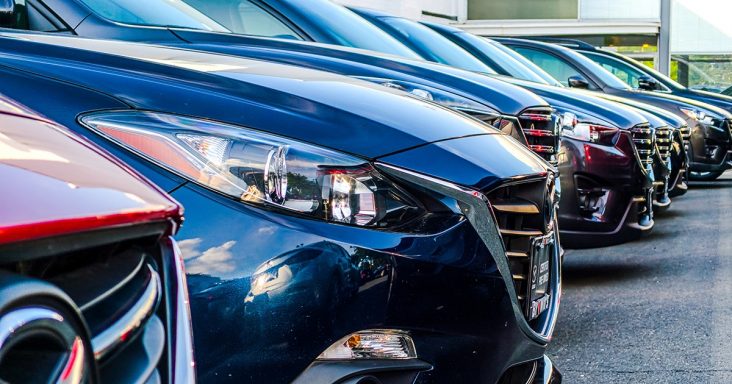Used vehicle values decline after record highs over the summer
by October 22, 2020 3:51 pm 1,797 views

Used vehicle values started to fall in September, from August, after rising for three consecutive months, economists said. However, used vehicle values were still higher than they were in September 2019.
At the start of the pandemic, used vehicle values began to decline but started to recover in May. This was followed by three consecutive months of record vehicle values, said Jonathan Smoke, chief economist for Cox Automotive.
In September, the values declined 1.58%, from August, said Zo Rahim, manager of economics and industry insights for Cox Automotive. This brought the Manheim Used Vehicle Value Index to 161.2, and this was a 15.2% increase from September 2019. The index is a measure of used vehicle price changes that can be compared over time but evolves to represent the actual vehicles being sold, said Smoke, adding that the index indicates what dealers are paying for used vehicles in the wholesale market.
“The year-over-year price performance of the seasonally-adjusted series remains stronger than average,” Rahim said. “The above-average price performance is not abnormal from a historic perspective as we have had periods of strong price performance at auction and periods of underperformance. Trends that we’re seeing [are] due to the incredible price performance since April as well as the seasonal comparison being strong.”
Used vehicle sales and prices typically reach a peak in March and April as a result of tax refund season, but the pandemic contributed to declines and increases throughout the year, Rahim said.
“We peaked in week 11 and then started the slide down that lasted until week 18,” Smoke said. “We then saw a full recovery leading to record high prices. No recent year has been close to the level of prices compared to the beginning of the year that we saw this summer. Prices peaked in week 34 and have been declining in a seasonally normal fashion each week since.”
Higher vehicle values translated to stronger retention values that were 5.5 percentage points higher than in 2019, and he added “that is quite a swing in values. And no doubt, people with old vehicles have been very happy about their portfolio results this summer.”
Despite some softening in the market, Smoke said, the supply of used vehicles remains tight and demand remains strong. He doesn’t expect this to change much throughout the fourth quarter, and spring 2021 is expected to be favorable for values.
He said new vehicle sales are expected to be 13.9 million in 2020, and used sales are projected to reach 36.1 million. He noted the risk of a double-dip recession grows without another federal stimulus package by the end of the year. A large stimulus package could contribute to more sales, but the virus and timing of a vaccine could affect this, he added.
He expects the used vehicle value index to be up about 8% for the year, from 2019, and increase 13% in December, from the previous month in 2019. New record highs are expected in spring 2021, and year-over-year comparisons should be more normal in the second half of 2021, he said.
Asked about how consumers would spend money from another stimulus, he said consumers would use it toward the purchase of a vehicle. People also might be delaying a vehicle purchase because they are waiting to get a stimulus check, he added.
Dealers cited inventory as the No. 1 issue that’s holding back their business, and Smoke expects inventory to rise in the new and used car market next year but not significantly.
Smoke noted that used vehicle dealers’ sales margins might’ve been higher if they were to sell a vehicle that they had acquired in early spring when prices were low. As a result, dealers went from wondering if they would remain in business in early spring to having one of the most profitable summers.
Dealers have reported strong retail demand and a decrease in repossessions, and this has contributed to declines in the wholesale market, he said. For the year, repossessions are expected to fall by about 18%, or 300,000 vehicles, from 2019. Repossessions are down because delinquencies and defaults have declined, which are results of stimulus funding and accommodations, he said. Auto loan defaults are expected to be down 36% in 2020, from 2019. Defaults for subprime borrowers are expected to fall 41% over the same period as the most likely borrowers to go into default received accommodations to avoid it.
But the delinquencies have started to rise with stimulus payments running out, said Smoke, noting that he doesn’t expect a big increase in delinquencies until 2021. The defaults that should have happened this year will come next year instead, he said.
Smoke expects the wholesale market to rise by about 900,000 vehicles in 2021, from 2020, and this would put the market back to 2017 levels but not to 2019 or 2018 levels. The rise can be attributed to the additional repossessions and higher used and new vehicle sales. He said the only drag to the increase can be attributed to the lower use of rental vehicles and fleet reductions.
